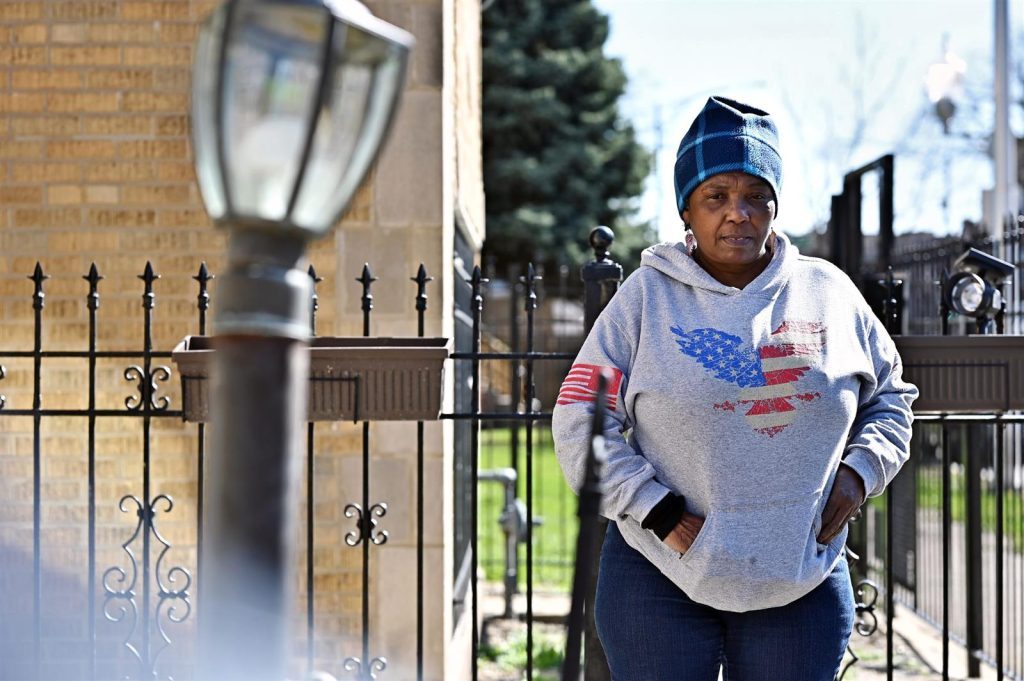
Flooding is Illinois’ Most Threatening Natural Disaster. Are We Prepared?
This story was originally published by the Illinois Answers Project.
The electricity in Mary Buchanan’s home in West Garfield Park was not working – again.
The outage lasted four days, starting just after a crew dug up her front lawn to install a check valve in late March, in order to stop waste water from pouring into her basement. She told herself this $12,000 construction would be worth it if it means no more flooding.
Last summer, as historic rain pelted down on Cook County, Buchanan was left standing in the basement of her childhood home with dirty water wading up to her knees. Every day since has presented a new problem: discovering black mold scattered throughout the basement, having to replace the water heater and then getting denied for federal emergency funds.
The July 2023 storm – one of the costliest weather events in Chicago’s history – hit hardest in the city’s West Side and nearby suburbs. The storm upended Chicagoans’ lives and exposed the city’s longstanding vulnerabilities to flooding. In the wake of the storm, FEMA inspected 63,000 homes, and distributed up to $375 million in federal aid to home and business owners.
It also provided a look into a concerning future: The grip of climate change unyielding, winter and spring are expected to be wetter in Illinois while summer becomes even hotter. The downpour of rain will likely continue to be more intense for shorter durations and the locations where these flash flooding storms hit are less predictable, said Illinois State Climatologist Trent Ford.
Mary Buchanan’s daughter was living in her basement apartment last summer when a major storm caused floodwaters to reach up to their knees. Almost a year later, she’s still working to repair the damage. March 21, 2024 (Credit: Victor Hilitski, for the Illinois Answers Project)
The Illinois Answers Project interviewed a range of experts on flooding, climate and infrastructure to examine how prepared Chicago and the state are to combat the growing environmental threats its residents face, particularly from the problem of severe flooding. In this series over the next several weeks, Illinois Answers will explore how Chicago is trying to improve drainage in neighborhoods, how a promising flood prevention project got mired in bureaucracy, and how a state buyout program is helping residents when they have nowhere else to turn.
Flooding is the state’s most threatening natural disaster and touches every corner in Illinois, but communities of color and poorer areas often face the greatest risk – particularly in the city of Chicago and greater Cook County. Sewer and stormwater infrastructure can often no longer handle the onslaught of water that comes from these heavy rainfalls, experts told Illinois Answers. Chicago also has one of the largest numbers of properties at risk for flooding in the coming decades, research shows.
While a state task force has developed a long-range plan for flood mitigation across Illinois, Chicago has no equivalent roadmap.
Part of the city’s challenge is that multiple agencies share responsibility for flood mitigation in Chicago and Cook County. In an attempt to coordinate efforts, the Metropolitan Water Reclamation District of Greater Chicago has developed plans for new anti-flooding infrastructure for the South and West Sides, but the agency has refused to release them to Illinois Answers, saying the designs are not ready for implementation – despite their completion two years ago.
Read More From This Series: ‘Green Alleys’ Help Prevent Flooding, But Vulnerable Neighborhoods Must Wait in Line
Angela Tovar, who leads the newly reconstituted Chicago Department of the Environment, declined interview requests with Illinois Answers but in an emailed statement said her office will “collaborate and advise” other city agencies on flood-related policies as it continues to staff up, and that her team is working with the mayor’s office on “outlining a strategic direction for water policy issues in the city.”
She is “committed to climate justice and climate resiliency in Chicago,” she wrote. “We know that climate change will only exacerbate long-standing flooding challenges in many of our neighborhoods. Too often those Chicagoans impacted by flooding are also overburdened by other environmental harms.”
It’s been almost a year since the devastating flood hit the West Side, and Buchanan is among the many residents still struggling to repair homes that have been in families for generations. In the five decades that her family has lived there, she could only recall the basement flooding once, with minimal water that receded in an hour or so.
“My mother would die if she saw it like this,” Buchanan said.
The basement apartment, where Buchanan’s adult daughter lived, has been gutted down to its studs. She has had to replace the water heater and furnace and also fill out the painstaking FEMA applications, which took Buchanan hours to complete. Not to mention the subsequent denials and appeals.
Almost nothing in her basement was salvageable after the storm: The red plush carpet has been torn up. The bathroom and kitchen are no more. The antique wood furniture that belonged to her mother had to be trashed.
The black mold that festered in her basement’s walls for months was finally removed in December. But Buchanan can’t seem to shake a cough. It gets so bad, she said, she finds herself nearly choking. At 68 years old, she is having asthma attacks for the first time in her life.
Buchanan said her fixed income means she’s struggling to afford the costs to repair her home and prevent future flooding.
“I want this house to stay in my family,” she said. “My mom worked too hard.”
Black mold can be seen throughout Mary Buchanan’s basement almost a year after her home was flooded. (Credit: Victor Hilitski, for the Illinois Answers Project)
Mary Buchanan recently had crews install a check valve to stop waste water from flowing into her home the next time her West Garfield Park neighborhood experiences flooding. (Credit: Victor Hilitski, for the Illinois Answers Project)
Why Illinois is So Vulnerable to Flooding
Storms like those from last summer are no longer once in a decade.
Scott Lincoln, senior service hydrologist for the National Weather Service forecast office in Chicago, said he could not recall the last time Cook County had two federally declared flood disasters during the same year, referencing storms on July 2 and Sept. 17 of last year.
This decade, though still in its infancy, has seen three extreme rainfall events –– the highest known number since 1950, Lincoln said.
“It’s not an if, it’s more of a when,” Lincoln said of the next extreme rain event.
The state’s climate has gotten wetter in the springtime, which combined with rapid snowmelt and heavier rainfall means rivers in Illinois are often breaking records for highest peaks, said Ford, the climatologist who provides weather and climate data to Illinois farmers, policymakers and government agencies.
Non-river flooding, or pluvial flooding, “is equally or maybe even more so a problem” for Illinois, Ford said. That’s because heavy precipitation, lasting anywhere from an hour to a couple of days, can “just overwhelm the landscape.”
This type of flooding is also less predictable, Ford said. For example, scientists and state officials would be able to determine days in advance if the Mississippi River is going to flood the city of Quincy, allowing time for preparation, he said.
But with non-river flooding, it’s much more difficult, Ford said. These heavy rainfall events often occur outside of the areas where floodplains are diligently mapped.
How a city or town’s infrastructure will respond to flooding from a series of storms is complicated to predict, he said.
Wetlands and prairies, which once made up much of Illinois, work as a sponge to soak up rainwater – which ultimately reduced the risk of stormwater runoff and widespread flooding. But now many of these areas have turned into farms and cities and towns, filled with roads, parking lots and homes.
As a result, these impervious areas prevent water from easily infiltrating into the ground, said Glenn Heistand, section head of the Illinois State Water Survey’s Coordinated Hazard Assessment and Mapping Program. Instead, it creates even more runoff that overwhelms stormwaters systems.
Scientists with the Water Survey, housed at the University of Illinois, conduct research on various water issues. Heistand and his team work to identify areas in Illinois that are at high-risk for flooding as well as assess flood hazards. The team also works with towns and cities to help local governments understand the flooding risks they face.
Stormwater systems, Heistand said, were designed and built to handle a certain amount of water. The frequency and intensity of rain storms have upended the system’s ability to be effective. Towns and cities also have a varying ability to maintain their aging infrastructure.
In Chicago, with more than 4,500 miles of sewer lines to oversee, the Department of Water Management faces constant dilemmas over which mains the city should upgrade or replace with its limited resources, said Brendan Schreiber, who oversees sewer management for the department.
Schreiber likened the city’s labyrinthine sewer system to its network of streets and highways, saying a storm event is like rush hour: “Water goes into the system and it’s all trying to get to the same point at the same time, and that causes it to back up. … What we focus on is reducing that risk.”
The department aims to maintain every city sewer to the point where it can handle a “five-year storm,” as defined by the Water Survey’s 2020 report Schreiber said. For comparison, parts of the West Side experienced a 50-year storm when they received more than 7 inches of rain in a single day, according to rain data from PRISM Climate Group, a national weather database operated out of Oregon State University.
The Department of Water Management does not maintain maps showing the age or capacity of its sewers, said spokesperson Megan Vidis. Instead, officials mostly rely on 311 flood complaints to decide which sewers to replace, Schreiber said.
What Chicago and the State Are Doing to Combat Flooding
Chicago is second in the country for the greatest number of properties at risk of flooding, according to First Street Foundation, a nonprofit that researches climate risk.
It’s expected to get even worse: Cook County has about 172,000 properties at substantial risk for flooding, according to data First Street provided to Illinois Answers. This group projects it to grow by about 10% by 2053.
These figures are larger than that of FEMA since the nonprofit factors in pluvial flood risk, which the federal agency does not.
In 2022, the state updated its water plan for the first time in 35 years, said Terra McParland, flood surveillance program manager for the state Office of Water Resources.
The statewide report focused on the most pressing water concerns and the task force made 15 flood damage mitigation recommendations. Among them: update the state’s rainfall prediction data, which is used to design infrastructure; identify underserved communities that need help with flood planning; and create a pilot urban flood warning system.
McParland, who oversaw the flood damage mitigation section, said this was the first year the plan explicitly discussed the impact of climate change and focused on social and environmental justice. She said the state water plan is expected to be updated every 10 years.
Chicago’s approach to the issue is more complicated.
Multiple city departments have pursued initiatives related to flood control. The city’s Department of Water Management, for example, plans this year to build a pair of underground storage tanks on the West Side capable of holding a combined 1.6 million gallons of stormwater, Vidis said. A longer-running project would add a 10-mile tunnel by the end of the decade to alleviate basement flooding for about 30,000 residents on the South and Far South sides, she said.
But the city is worse off for the lack of a unified, cross-departmental plan to seek funding and prioritize spending on the issue, said Ald. Maria Hadden (49), chair of the City Council Committee on Environmental Protection and Energy.
Last fall, Hadden introduced a resolution calling for a non-binding question to be added to the March 2024 primary ballot asking if Chicago should develop a “comprehensive flood mitigation plan.”
Hadden’s resolution for a ballot referendum did not pass, but the alderwoman said she hopes to use her committee to help corral city departments into a unified plan on flood control and prevention. The responsibility also lies with Mayor Brandon Johnson and the Department of the Environment, she said.
“The question is … can we all get on the same page and identify this as a priority?” she said.
‘I Feel Left Behind’
During the July storm, a majority of 311 calls about basement flooding were concentrated in predominantly Black neighborhoods on the West Side, city data shows.
The city registered water-in-basement complaints from nearly 7,000 addresses in the first week of July 2023. More than half were from five community areas: Austin, West Garfield Park, Belmont Cragin, Humboldt Park and North Lawndale.
Queen Jackson, 83, said she called 311 during the July storm to report the flooding of her West Garfield Park home. Jackson has been disappointed in the lack of aid from the city.
Queen Jackson, 83, has lived in her West Garfield Park home for six decades. She said she invested money into flood control efforts – and she still faced significant flood damage from the storm last July. March 7, 2024 (Credit: Meredith Newman)
Instead, she has turned to Princess Shaw, a longtime Lawndale organizer who formed the West Side Long-Term Recovery Group to help residents struggling to clean up their homes and navigate federal bureaucracy.
Shaw has also met with city officials, advocating for more aggressive infrastructure improvements. She believes the city has provided only “Band-Aid” fixes, like rain barrels and relining pipes, and instead wants longer term solutions.
Shaw estimates the group is working with 250 families, helping them get mold removed from their flood-damaged homes and fill out paperwork to submit to FEMA to receive federal aid.
In Jackson’s home, where she raised children and grandchildren over six decades, splatters of orange and brown mold are on the walls throughout her basement. Wood is warped from the water damage and pieces of broken tile are still scattered throughout. A damp smell lingers. Her grandson still lives in the basement.
A contractor estimated $46,000 was needed to repair Jackson’s basement and roof. She said she only received a fraction of that from FEMA.
“We work all our lives,” Jackson said of her disappointment at the government’s response. “I never had to file for nothing. I asked for nothing free. I paid for everything. And … now that I’m retired, I don’t get that check every week like I used to…”
“I feel left behind – period.”
Buchanan isn’t sure when the basement in her West Garfield Park home will become livable again for her daughter. She has been approved for about $32,000 in federal aid, just half of what she said is the estimated damage to her basement. But it required her appealing to FEMA multiple times.
When it rained in March, Buchanan rushed down to check her basement – no water.
“I’m just praying,” she said, “no more problems.”
Contributing: Alex Nitkin
This story was made possible by a grant from The Richard H. Driehaus Foundation to the Illinois Answers Project.
This article first appeared on Illinois Answers Project and is republished here under a Creative Commons license.
Mary Buchanan, who lives in West Garfield Park, goes through some of the belongings that she was able to save after her basement last year. (Credit: Victor Hilitski, for the Illinois Answers Project)
Local News

Niego Real Estate salutes America again
Spread the love. Popular flag program underway . By Tim Hadac Clearing and Garfield Ridge residents who want to decorate their blocks in red, white and blue this Independence Day are encouraged to contact Niego Real Estate and reserve a supply of U.S. flags at no charge. The popular program to promote patriotism and community…

Lyons Mental Health Commission pulls LeaderShop funding
Spread the loveExecutive director accused of harassment From staff reports The local nonprofit service community was jolted when nearly $300,000 in mental health funds was withdrawn by a Lyons Township agency from the Western Springs LeaderShop, a social service agency that has provided youth programs for nearly 40 years. The Lyons Township Mental Health Commission…

Mount Carmel, Marist and Oak Lawn among 84 teams at Riverside-Brookfield shootout
Spread the loveBy Xavier Sanchez Correspondent High school boys basketball does not stop in March and pick back up in late autumn. For many players, playing hoops is a year-round commitment. AAU ball is a big reason for, that there are summer camps, shootouts or other events at most schools during the summer. The…

Dog lovers to celebrate ‘Fur of July’
Spread the love. By Peggy Zabicki Your correspondent in West Lawn 3633 W. 60th Place • (773) 504-9327 . I’m starting out with some fun news. The West Lawn Dog Park Advisory Council will be hosting a Fur of July Pet Parade on Saturday, June 29 from 10:30 a.m. to 12:30 p.m. at West Lawn…
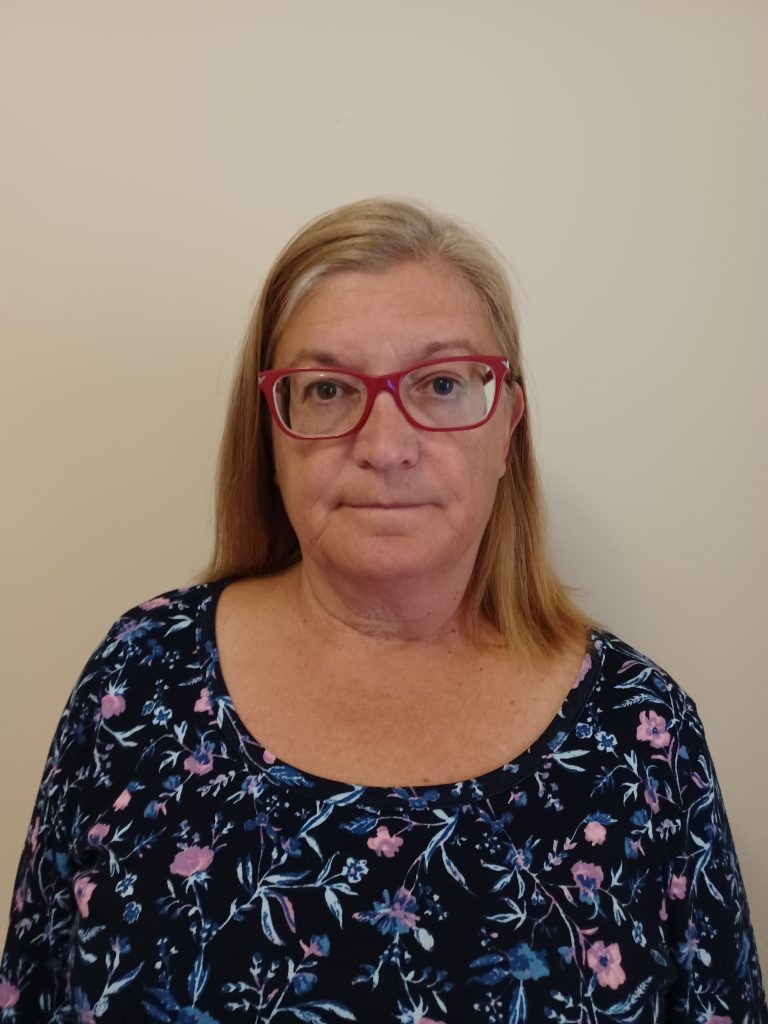
Fourth of July not happy for everyone
Spread the love. By Mary Stanek Your correspondent in Archer Heights and West Elsdon 3808 W. 57th Place • (773) 517-7796 . Happy Fourth of July. Cannot believe I am already saying that, time sure goes. Hope it is safe and quiet for everyone and especially all of our house pets. For us its shutting…

St. Rita’s transformation is worth a look
Spread the love. Kathy Headley Your correspondent in Chicago Lawn and Marquette Manor 6610 S. Francisco • (773) 776-7778 . St. Rita of Cascia Church, 63rd and Fairfield, continues to undergo its transformation from the sunflowery/harvest golds and browns of the 1960s and 1970s to the calming pastels of the 2000s. Since the basilica-style church…
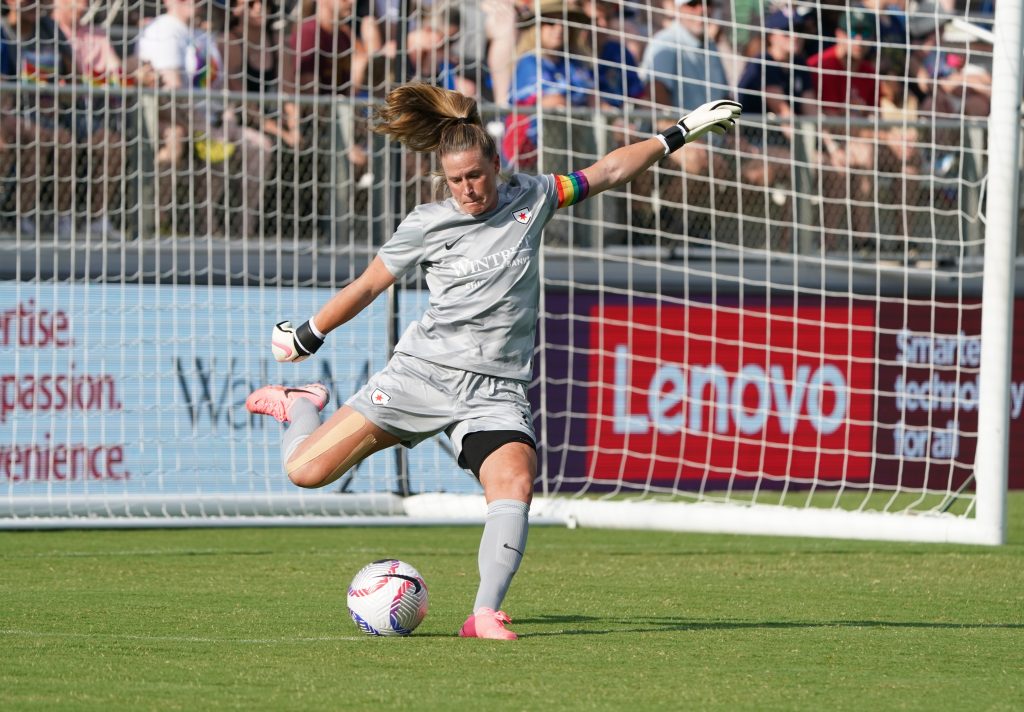
Loss to Courage brings Red Stars’ winless streak to five games
Spread the loveBy Jeff Vorva Correspondent The Chicago Red Stars historic start to the season is all but forgotten. In the last five matches, the Red Stars have failed to win, with the latest setback being a 3-1 loss on the road to North Carolina on June 23 in an NWSL battle. The Red Stars…

Summer League Basketball | Illinois powers compete at Riverside-Brookfield Shootout
Spread the loveBy Xavier Sanchez Correspondent School’s out for the summer, but high school athletes across Illinois are remaining active during the summer sports season. This includes basketball players, who can be found at camps, open gyms, camps and even weekend tournaments. Among the more high profile hoops action in the area was the Riverside-Brookfield…

Dana Rettke and Ryan Murphy heading to Paris Summer Games
Spread the loveBy Jeff Vorva Correspondent Area fans of the Summer Olympics will have extra reasons to cheer athletes from the United States in the upcoming Paris Games. Dana Rettke of Riverside is a member of the U.S. women’s volleyball team and Palos Heights native Ryan Murphy will represent the country in swimming. Rettke, a…

Hope Church feeds the hungry at Marquette Park
Spread the love. Kathy Headley Your correspondent in Chicago Lawn and Marquette Manor 6610 S. Francisco • (773) 776-7778 . Last week on the way to our CAPS meeting at the Marquette Park Fieldhouse, I stopped in at the Tuesday Community Dinner hosted by Hope Church every week in the auditorium. Pastors Ben and Jordyn…
Neighbors
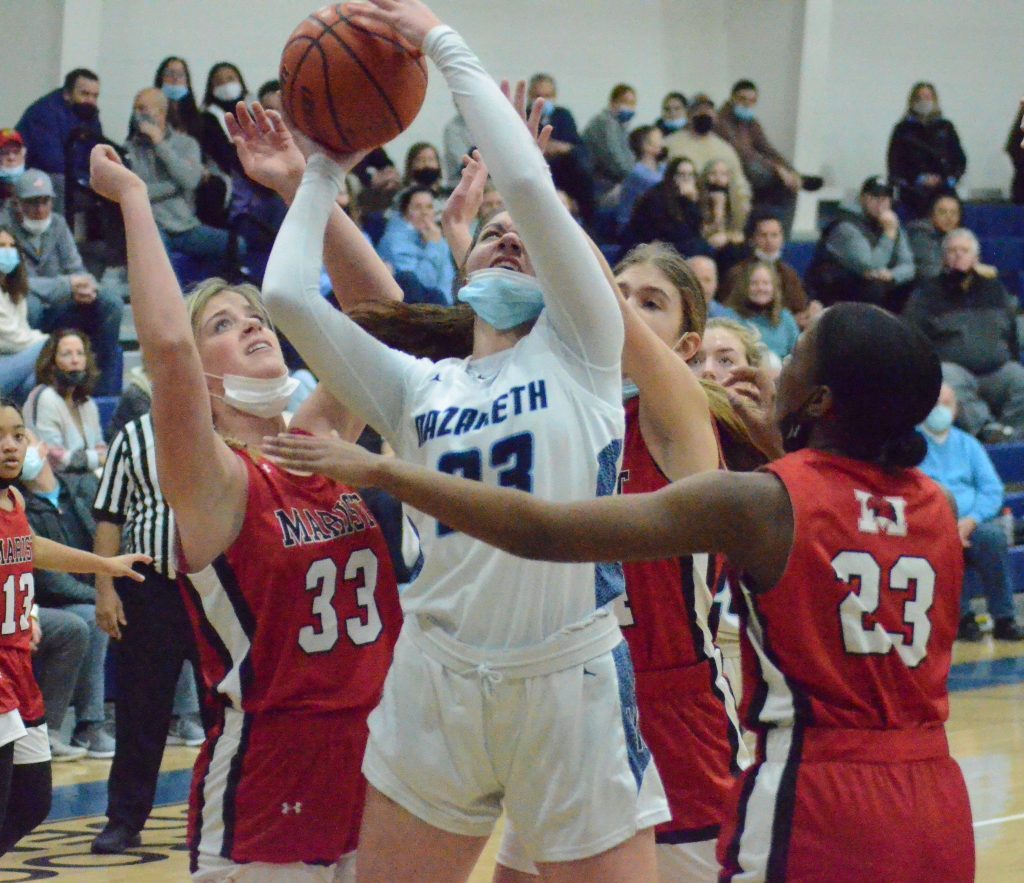
‘Grizzled’ sophomores help Naz beat Marist
Spread the loveBy Jeff Vorva Staff Writer Nazareth’s “grizzled veterans” have won 19 of their first 20 games. The Roadrunners’ were victorious in a big East Suburban Catholic Conference showdown with Marist, with two sophomores doing most of the damage in a 53-42 win in LaGrange Park on Jan. 19. Nazareth improved to 19-1, 4-0.…

Postseason Sports Report: Area stars ready for state bowling and dancing
Spread the loveBy Jeff Vorva Staff Writer The first two IHSA state tournaments for winter sports will take place this weekend, and an army of area athletes will be competing in both. The boys bowling and competitive dance championships will be held Friday and Saturday, with the bowlers heading to St. Clair Bowl in O’Fallon…
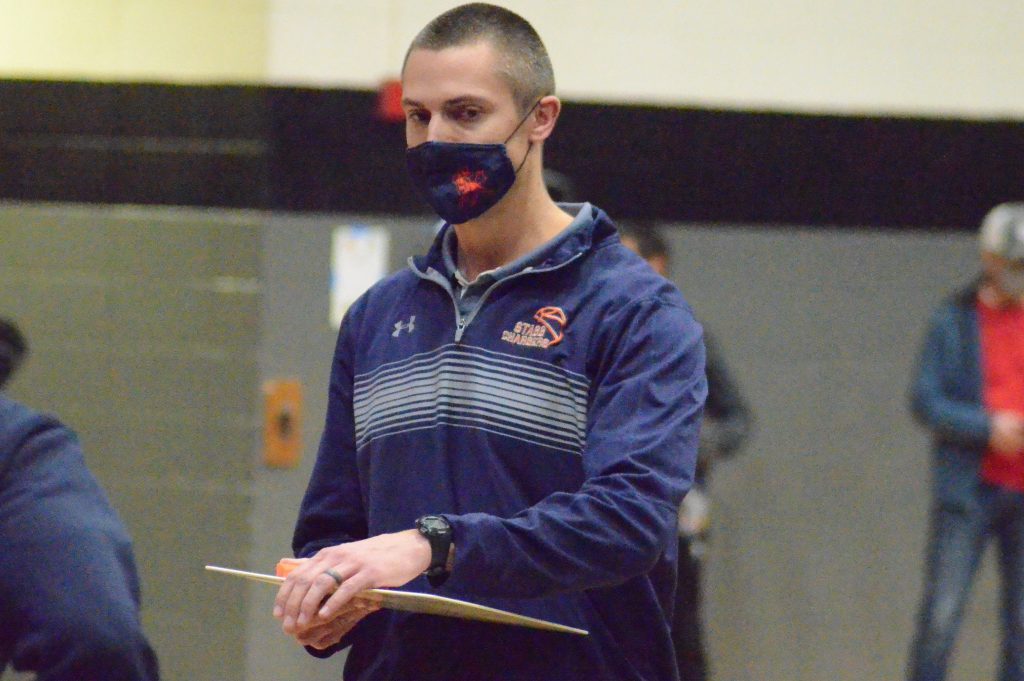
Strus tops former coach in Stagg’s win over Sandburg
Spread the loveBy Jeff Vorva Staff writer Marty Strus has nothing but good things to say about his former high school coach, John Daniels. “He’s meant a ton to me,” Strus said of the coach he faced off against last week when his Stagg Chargers took on Sandburg. “He meant a lot to me as…

Palos Area Chamber dedicated to promoting area
Spread the loveBy Kelly White Dedicated to helping local area businesses strive is the Palos Area Chamber of Commerce. The chamber was formed in 1949 when a small group of merchants joined together for the purpose of advancing economic, industrial, professional, cultural, and civic welfare of the Palos Heights area. For 68 years, the Palos…

We need real solutions to crime
Spread the loveBy Peggy Zabicki Your correspondent in West Lawn 3633 W. 60th Place • (773) 504-9327 Crime and safety concerns are the number one topic of all the calls and texts I receive. It seems that many politicians offer no solutions except the usual lists of ways to keep safe. I think everyone knows about locking…

Icy spill yielded plenty of good will
Spread the loveBy Mary Stanek Your correspondent in Archer Heights and West Elsdon 3808 W. 57th Place • (773) 284-7394 Here is a giant shout out to our first responders in the community. On Jan. 9, when a sheet of ice descended on Chicago, I was walking the dog. Walking around Peck School was great.…

It’s a busy January in Gage Park
Spread the loveBy Joan Hadac Neighborhood correspondent at large Greetings, Gage Parkers! I’m pleased to be filling in this week for Karen Sala. It’s fun for me to report on Gage Park, the neighborhood where I lived for the first 26 years of my life. There’s always something happening in this big, exciting part of…

You can bank on good service here
Spread the loveBy Kathy Headley Your correspondent in Chicago Lawn and Marquette Manor 6610 S. Francisco • (773) 776-7778 In this world of corporate takeovers, it is kind of hard to feel safe in the hands of big business. First, we have to supply some of our personal information to the automated system. Then there’s…
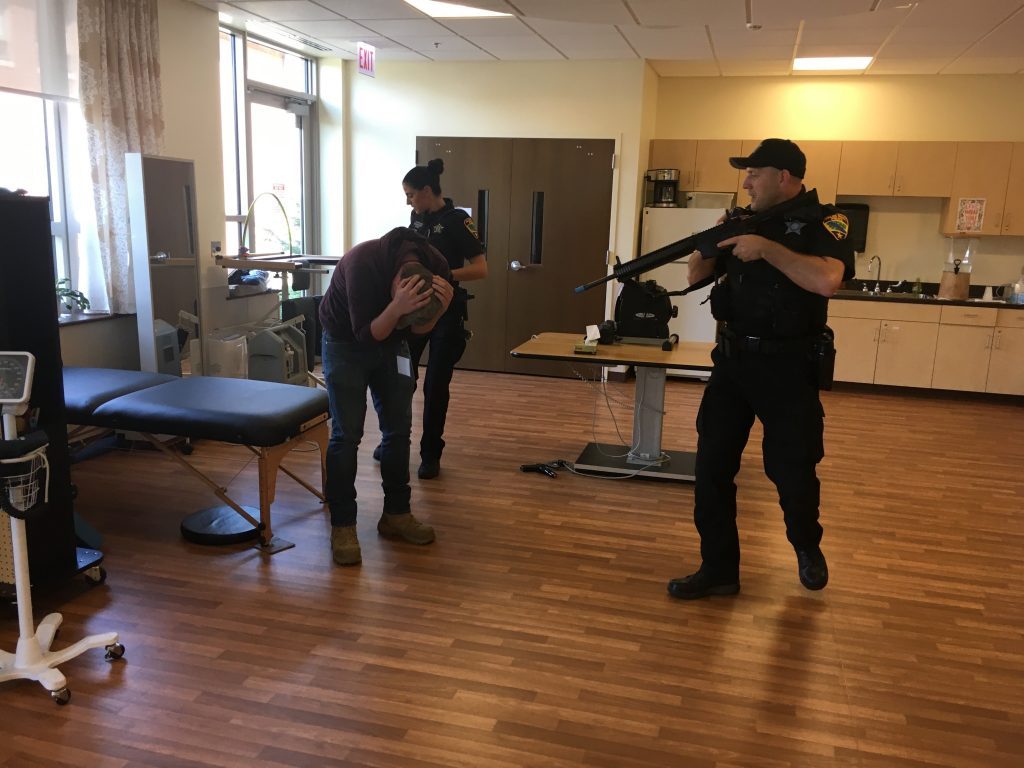
Palos Park police to hold active shooter drill
Spread the loveFrom staff reports Palos Park Police will fine tune their strategies for dealing with an active shooter to ensure the safety of both officers and citizens later this month. The end goal of the January 30 drlll is to test the department’s active shooter response plans and fine tune them. “Palos Park effective…






